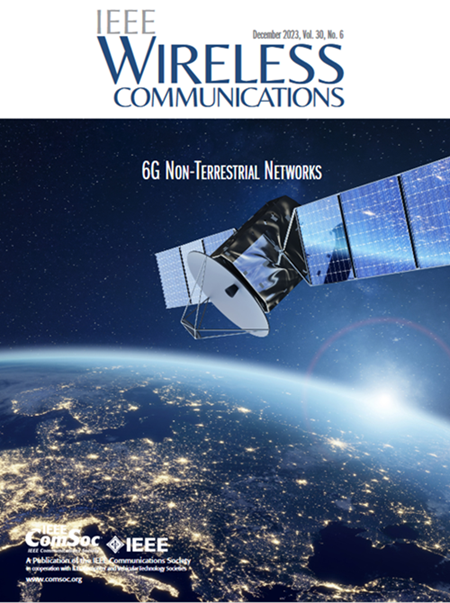走向6G$\text{TK}\mu$极限连接性:体系结构、关键技术和实验
IF 10.9
1区 计算机科学
Q1 COMPUTER SCIENCE, HARDWARE & ARCHITECTURE
引用次数: 0
摘要
与当前的5G相比,第六代(6G)网络正朝着新的功能和系统性能指标的数量级增强方向发展。特别是,6G网络有望实现Tbps级数据速率、Kbps/Hz级频谱效率和$\mu\mathrm{s}$级延迟的极端连接性能。为此,设计了一种独创的三层6G网络架构,以实现统一的全频谱无小区无线电接入,并为各种应用提供以任务为中心的敏捷接近支持。所设计的体系结构以超级边缘节点(SEN)为特征,它集成了连接、计算、Al、数据等。在此基础上,在集中式单元中建立了一个普适多级(PML)人工智能(Al)的技术框架,以实现以任务为中心的近实时资源分配和网络自动化。然后,我们介绍了一种全频谱统一无小区网络的无线电接入网络(RAN)架构,该架构是6G$\text{TK}\mu$极端连接的最具吸引力的RAN候选者之一。进一步讨论了一些最有前景的关键技术,即无细胞大规模MIMO、光子辅助太赫兹无线接入和时空二维信道编码。实施了一个试验台,并进行了广泛的试验,以评估创新技术和方法。所提出的6G网络架构和技术框架展示了全方位服务和全场景应用的令人兴奋的潜力。本文章由计算机程序翻译,如有差异,请以英文原文为准。
Toward 6G $\text{TK}\mu$ Extreme Connectivity: Architecture, Key Technologies and Experiments
Sixth-generation (6G) networks are evolving toward new features and order-of-magnitude enhancement of systematic performance metrics compared to the current 5G. In particular, the 6G networks are expected to achieve extreme connectivity performance with Tbps-scale data rate, Kbps/Hz-scale spectral efficiency, and $\mu\mathrm{s}$, -scale latency. To this end, an original three-layer 6G network architecture is designed to realize uniform full-spectrum cell-free radio access and provide task-centric agile proximate support for diverse applications. The designed architecture is featured by super edge node (SEN), which integrates connectivity, computing, Al, data, etc. On this basis, a technological framework of pervasive multi-level (PML) artificial intelligence (Al) is established in the centralized unit to enable task-centric near-real-time resource allocation and network automation. We then introduce a radio access network (RAN) architecture of full spectrum uniform cell-free networks, which is among the most attractive RAN candidates for 6G $\text{TK}\mu$ extreme connectivity. A few most promising key technologies, that is, cell-free massive MIMO, photonics-assisted Terahertz wireless access, and spatiotemporal two-dimensional channel coding are further discussed. A testbed is implemented and extensive trials are conducted to evaluate innovative technologies and methodologies. The proposed 6G network architecture and technological framework demonstrate exciting potentials for full-service and full-scenario applications.
求助全文
通过发布文献求助,成功后即可免费获取论文全文。
去求助
来源期刊

IEEE Wireless Communications
工程技术-电信学
CiteScore
24.20
自引率
1.60%
发文量
183
审稿时长
6-12 weeks
期刊介绍:
IEEE Wireless Communications is tailored for professionals within the communications and networking communities. It addresses technical and policy issues associated with personalized, location-independent communications across various media and protocol layers. Encompassing both wired and wireless communications, the magazine explores the intersection of computing, the mobility of individuals, communicating devices, and personalized services.
Every issue of this interdisciplinary publication presents high-quality articles delving into the revolutionary technological advances in personal, location-independent communications, and computing. IEEE Wireless Communications provides an insightful platform for individuals engaged in these dynamic fields, offering in-depth coverage of significant developments in the realm of communication technology.
 求助内容:
求助内容: 应助结果提醒方式:
应助结果提醒方式:


